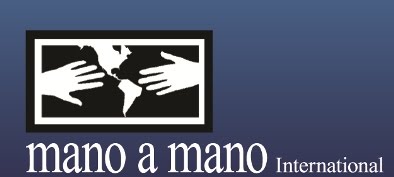Mano a Mano has been working in partnership with local Bolivian communities since 2005 on water projects. Water is critical; as the communities always tell us "water is life." One of our current water projects is constructing a large-scale agricultural water reservoir in Sancayani, Bolivia.
THE NEED
Over 3,000,000 of Bolivia’s 9,000,000 citizens live in rural areas. The vast majority of rural residents eke out a meager living as subsistence farmers, raising crops and a few domestic animals on one – two acre plots, and earning an average income of $200 - $300 yearly: less than $1.00 per day. The Cochabamba Valley essentially has two climatic seasons: a warm, rainy season during which rain falls nearly every day for three to four months, and a cooler dry season during the remaining months when moisture rarely falls. Lack of water during most of the year results in widespread failure of crops to mature and substantially reduces yields. In contrast, during seasons of heavy rains fields flood, washing away germinating seeds and spouting plants. Together, these problematic circumstances result in failure to meet the nutritional needs of the local farm families and make it nearly impossible for them to improve their standard of living.
Beginning in 1950, Sancayani farmers attempted to use their picks and shovels to dig a channel along the side of their mountain, hoping to direct spring water and snow melt to the land they cultivated, and thus increase their crop yields. Unfortunately, the area closest to them was filled with rock which they could not penetrate with hand tools. After numerous failures and a nearly disastrous landslide, they concluded that lack of engineering expertise and heavy machinery that could safely dig and stabilize the terrain would force them to abandon their dream of having sufficient water to raise crops to feed their families and sell produce in urban markets. Their Valle Alto neighbors told Mano a Mano staff that they had been trying for fifteen years to find a means to channel the abundant, high mountain spring water into the river so they could have water during the dry season. When these subsistence farmers heard that Mano a Mano had begun to build water reservoirs, they approached staff of Mano a Mano with a plea for help in constructing a reservoir. “Water is life”, they said. “Without water we cannot live”.
CONSTRUCTION
Sancayani is our largest reservoir project to date; when complete it will provide water for crops and livestock to 3,500-4,000 Bolivian families! This has been a very challenging project. The location is nearly 14,000 feet above sea level, with constant fog, mud, and sub-freezing temperatures. Our staff and 15-20 community members have been working for more than a year, with the reservoir scheduled for completion later this year.
Mano a Mano heavy equipment working on the channel to transport water to the reservoir





